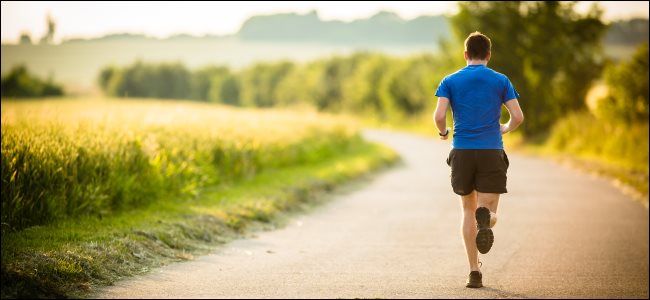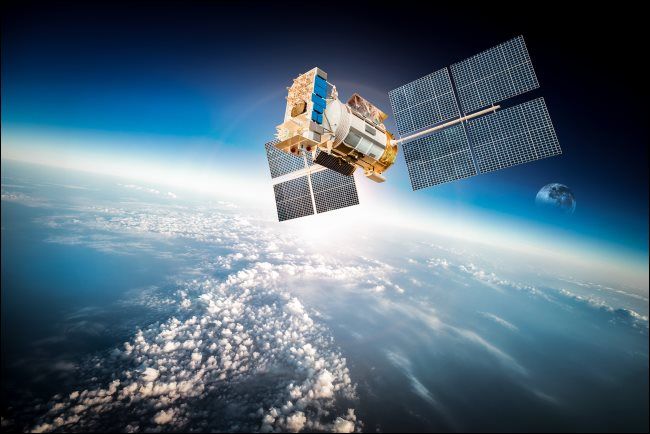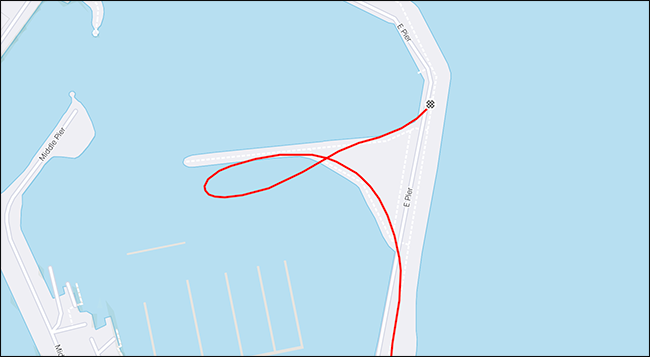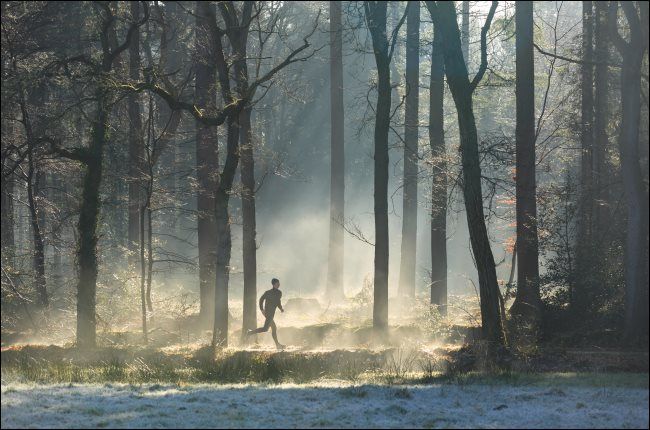Quick Links
Tracking your runs, bike rides, and other workouts is fun because you can see how much you're improving (or, in my case, dismally failing to improve). For it to be effective, though, you have to get the most accurate GPS results possible. A 4 or 5 percent error can be the difference between an average run and a personal best.
How GPS Works
The Global Position System (GPS) is a seriously complex setup. There are 24 satellites (plus a few spares, at any given time) orbiting about 12,550 miles above the earth every 11 hours and 58 minutes in one of six different orbital planes. That’s four satellites per orbit.
They’re spread out so that there's always a minimum of four satellites overhead, everywhere on Earth. More often, there are six or eight overhead. GPS satellites constantly transmit their exact time, orbital position, and the status of the rest of the constellation, which is the information that makes GPS work.
The ground control network is manned by the U.S. Air Force, which coordinates everything and makes sure the GPS network remains accurate.
Then, of course, there’s your receiving device. It collects signals from all the satellites to which it can connect and uses the info they broadcast to calculate your position as accurately as possible. If all’s going well, the results will be accurate to within about 30 feet.
Not all GPS receivers are created equal, however. The satellite signals aren’t particularly strong and can be blocked by hills, tall buildings, or even tree canopies and cloud cover. More powerful receivers, though, can pick up fainter signals and possibly even connect with more satellites.
It’s kind of crazy this is the system I use to track my easy Saturday morning 10k around my local park.
Let Your GPS Lock On
GPS is designed for accuracy, not speed. It can take a receiver a few minutes to lock onto the four (or more) satellites necessary for it to calculate an accurate position. This is why apps like Google Maps cheat a bit.
While most smartphones have a real GPS receiver, a lot of their positioning is done by Assisted GPS (at least until they get a GPS lock). It triangulates your position from that of nearby cell towers, rather than just the overhead satellites, which is a lot faster.
This is why, when you open Google Maps, you don’t have to wait a few minutes to find out where you are. Of course, it’s a lot less accurate---especially if you want a precise GPS track.
Before you go on a run or a ride, turn on the device or open the app you use and give it a few minutes to connect to the full GPS constellation. Use this as an opportunity to stretch or warm-up.
Some devices, like those made by Garmin, will let you know when they’ve got a good lock. Others, however, like the Apple Watch, will not---you'll just have to cross your fingers and give them some time.
Use a Dedicated GPS Device
Instead of using your smartphone, here are a few reasons why you might want to get a GPS running watch or cycling computer:
- Battery life: Receiving GPS signals takes quite a bit of power. If you also want to use your smartphone to listen to music (or have enough charge left to call someone in an emergency), it’s better to have a dedicated GPS device.
- Convenience: Wrist- or handlebar-mounted GPS units are easier to use than a smartphone that's stashed away in your bag, pocket, or armband. They also give you live updates about your speed and distance.
- Accuracy: Although no device is 100 percent accurate, dedicated GPS devices tend to be more so. They can also use predictive algorithms based on your bike speed, stride length, or cadence if they lose a signal.
- Better GPS chips: Dedicated devices tend to use higher-end GPS receivers that can pick up fainter signals.
If you don’t want to use a dedicated GPS device (or just can't afford one at the moment), try a few different apps and see which one gives you the best results.
I’ve had success with iSmoothRun and Runkeeper. Strava and the Fitbit app both seem to overestimate distance a bit too much.
Watch Where You Train
GPS signals can easily be blocked by overhanging trees or the steep sides of a gorge. Tall buildings can also reflect them and confuse the calculations. Remember, your receiver needs to see a minimum of four satellites to accurately place you. If its view of the sky is blocked, it will likely struggle.
If you need a GPS track that's as accurate as possible, say for a virtual marathon, or to set a personal best, then carefully consider your route. Find a nice open-air track or park and run there instead of dodging through alleys or charging down steep hills in the woods.
Enable Secondary Satellite Constellations If Possible
GPS isn’t the only Global Navigation Satellite System (GNSS). There’s also GLONASS (Russian), Galileo (European Union), and a few others.
Some devices, like the Apple Watch, can receive signals from those and will automatically connect to the strongest one. Others, like some Garmin watches, require that you manually enable secondary satellite constellations. Your device's battery life will take a small hit, but it’s probably worth it.
Use the Same Setup Each Time
No GPS setup is perfectly accurate, but most of them are at least consistent in how they track things.
My Apple Watch, for example, always uses the same cadence and stride length info to fill in any gaps in the GPS track. While the overall track might be out by a percentage or two, it’s almost always going to be out in the same way.
If I were to switch to a Garmin watch, it would use a different algorithm to smooth out my route, so it would be difficult to compare to my past results. This is why it's also a good idea to use the same app to log your workouts. Otherwise, you won't know if you really ran faster, or if the difference is just due to how the devices or services calculated the distance.
This doesn't mean you should never upgrade your device. Rather, just try to keep your setup as similar as possible. Wear your watch on the same wrist and track things in the same app with the same settings. It’ll keep your training history far more accurate.
Accept That It Won’t Be Perfect
GPS apps are a wonderful tool for tracking your training, but that’s all they are. Don’t put too much stock in their results---especially the live pace updates, which are incredibly error-prone.
If you were 10 seconds slower, maybe you were just slower. But it could also be a tracking error. Focus on enjoying your workouts and treat your training record as a bonus.
Of course, if you really want to know how fast your 5k time is, head to a track and run 12.5 laps with a simple stopwatch---it'll tell you exactly what pace you held.




